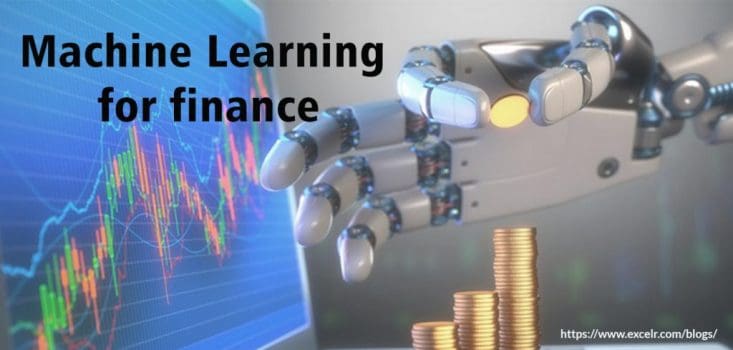Before the advent of mobile banking apps, proficient chatbots, or search engines, machine learning has had fruitful applications in finance well. Few industries are better suited for artificial intelligence as they have high volume, historically accurate and quantitative data. And finance world is the leader of the pack. More accessible machine learning tools and more accessible computing power has triggered the use of machine learning in finance more than ever before.
From approving loans to managing assets to assessing risks, machine learning has come to play an integral role in many phases of the financial ecosystem. Yet the manner in which machine learning finds its way into their daily financial lives is the testament of its power.
Machine Learning in Finance – Current Applications
The examples below are being put to use actively today for machine learning. It’s true that some applications not only leverage exclusively machine learning, also multiple AI approaches.
Portfolio Management
The term “robot-advisor” is now commonplace in the financial landscape, just five years ago this term that was unheard-of. And no it doesn’t involve robots. To calibrate a financial portfolio to the goals and risk tolerance of the user, these algorithms are built.
Algorithmic Trading
The use of complex AI systems to make extremely fast trading decisions were envisioned in the seventies. An increasingly important role in calibrating trading decisions in real time is played out by machine learning and deep learning. The term “high-frequency trading” (HFT), an algorithmic system, which is considered to be a subset of algorithmic trading is often responsible for making thousands or millions of trades in a day.
Fraud Detection
There is a “perfect storm” in the offing given that an increasing amount of valuable company data being stored online as the internet is becoming more commonly used in combining more accessible computing power leading the data security risk and other vulnerabilities. New potential (or real) security threats are actively learned by modern fraud detection.
Systems can detect unique activities or behaviors and flag them to security teams by the use of machine learning. To avoid false-positives – situations on the “risks” flagged that were never risks in the first place is the challenge that is being addressed by these systems.
Loan / Insurance Underwriting
A perfect job for machine learning in finance could be underwriting. However, machines replacing a large swath of the underwriting positions that exist today is a great deal of worry in the industry today. Millions of examples of consumer data and financial lending or insurance used to train machine learning algorithms, especially amongst large companies. This is done to detect trends that might influence lending and insuring into the future, underlying trends which can be assessed with algorithms can be analyzed.
Future Value of Machine Learning in Finance
Customer Service
Rapid expanding area of venture investment and decreased customer service budgets are paving way for chatbots and conversational interfaces. With robust natural language processing engines as well as reams of finance-specific customer interactions, these assistants are now being rapidly built.
People who log onto a traditional online banking portal and do the digging themselves quite often require swift querying and interaction from someone that might pick up their searches and preferences and provide suggestions assistance. At the same time assure the customer that the assistance will not be accessing sensitive data.
Today, in banking and finance, this kind of chat experience is not the norm. This may become a viable option for millions in the coming years.
To manifest itself as specialized chatbots in a variety of fields and industries is likely goes beyond machine learning in finance.
Security 2.0
The archaic security protocols of usernames, passwords, and security questions will no longer be in vogue for years to come. User security in banking and finance is a predominantly high-risk game. Future security measures might require facial recognition, voice recognition, or other biometric data, in addition to anomaly-detection applications like those currently being developed and used in fraud.
Sentiment / News Analysis
We can expect to hear very little by way of how sentiment analysis is being used specifically on how hedge funds hold their cards tight to their chest. Nevertheless, understanding social media, news trends, and other data sources will be much of the future applications of machine learning.
To enhance and replicate human “intuition” of financial activity by discovering new trends and telling signals is the only hope by the machine learning as the stock market has nothing to do with ticker symbols in response to myriad human-related factors.











